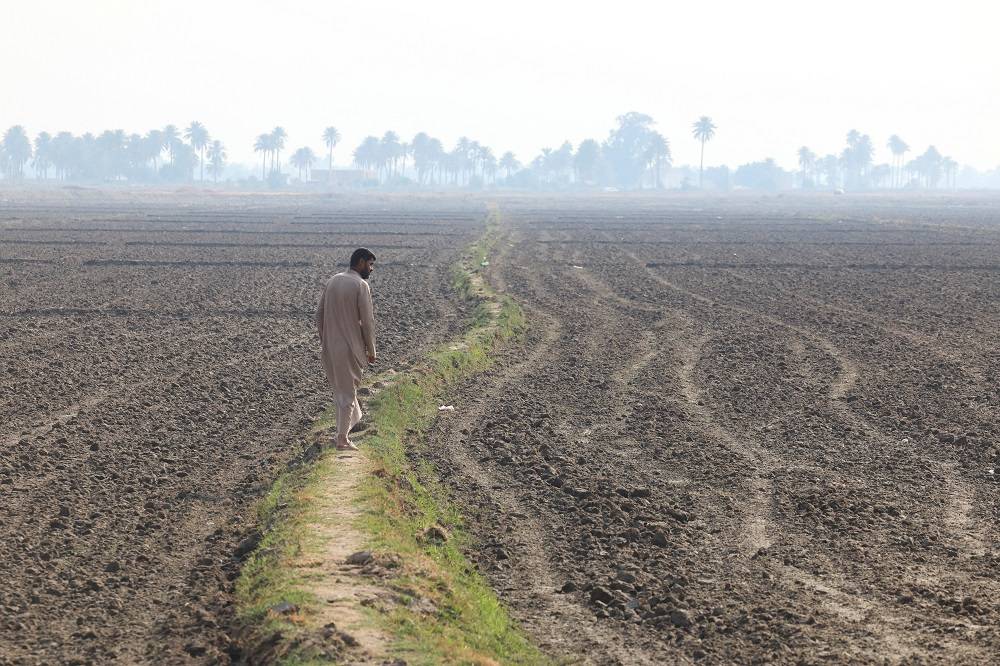A train station in Damascus was once the pride of the Syrian capital, an essential link between Europe and the Arabian Peninsula during the Ottoman Empire and then a national transit hub. But more than a decade of war left it a wasteland of bullet-scarred walls and twisted steel.
The Qadam station's remaining staff say they still have an attachment to the railway and hope that it, like the country, can be revived after the swift and stunning downfall of leader Bashar Assad last month.
On a recent day, train operator Mazen Malla led The Associated Press through the landscape of charred train cars and workshops damaged by artillery fire. Bullet casings littered the ground.
Malla grew up near the station. His father, uncles and grandfather all worked there. Eventually he was driving trains himself, spending more than 12 hours a day at work.
“The train is a part of us," he said with a deep, nostalgic sigh, as he picked up what appeared to be a spent artillery shell and tossed it aside. “I wouldn’t see my kids as much as I would see the train.”
The Qadam station was the workhorse of the iconic Hejaz Railway that was built under the Ottoman Empire’s Sultan Abdulhamid II in the early 1900s, linking Muslim pilgrims from Europe and Asia via what is now Türkiye to the holy city of Madinah in Saudi Arabia.
That glory was short-lived. The railway soon became in an armed uprising during World War I backed by Britain, France and other Allied forces that eventually took down the Ottoman Empire.
In the following decades, Syria used its section of the railway to transport people between Damascus and its second city of Aleppo, along with several towns and neighboring Jordan. While the main station, still intact a few miles away, later became a historical site and events hall, Qadam remained the busy home of the workshops and people making the railway run.
As train cars were upgraded, the old wooden ones were placed in a museum. The Qadam station, however, retained its structure of Ottoman stone and French bricks from Marseille.
But war tore it apart after Assad's crackdown on protesters demanding greater freedoms.
“The army turned this into a military base,” Malla said. Workers like him were sent away.
Qadam station was too strategic for soldiers to ignore. It gave Assad's forces a vantage point on key opposition strongholds in Damascus. Up a flight of stairs, an office became a sniper's nest.
The nearby neighborhood of Al-Assali is now mostly in ruins after becoming a no man’s land between the station and the Palestinian refugee camp of Yarmouk that became an opposition stronghold and was besieged and bombarded for years by government forces.
The fighting entered the railway station at least once, in 2013. Footage widely circulated online showed opposition firing assault rifles and taking cover behind trains.
Malla and his family fled their home near the station to a nearby neighborhood. He heard the fighting but prayed that the station that had long been his family's livelihood would be left unscathed.
Assad's forces cleared the opposition from Damascus in 2018. The train station, though badly wrecked, was opened again, briefly, as a symbol of triumph and revival. Syrian state media reported that trains would take passengers to the annual Damascus International Fair. It broadcast images of happy passengers by the entrance and at the destination, but not of the station's vast damage.
Syria’s railway never returned to its former prosperity under Assad, and Malla stayed away as the military maintained control of much of Qadam. After Assad was ousted and the factions who forced him out became the interim administration, Malla returned.
He found his home destroyed. The station, which he described as “part of my soul,” was badly damaged.
“What we saw was tragic,” he said. "It was unbelievable. It was heartbreaking.”
The train cars were battered and burned. Some were piles of scrap. The museum had been looted and the old trains had been stripped for sale on Syria’s black market.
“Everything was stolen. Copper, electric cables and tools — they were all gone,” Malla said.
The trains' distinctive wooden panels had disappeared. Malla and others believe that Assad's fighters used them as firewood during the harsh winters.
In the former no man's land, packs of stray dogs barked and searched for food. Railway workers and families living at the train station say an urban legend spread that the dogs ate the bodies of captives that Assad’s notorious web of intelligence agencies killed and dumped late at night.
Now Malla and others hope the railway can be cleared of its rubble and its dark past and become a central part of Syria's economic revival after war and international isolation. They dream of the railway helping to return the country to its former status as a key link between Europe and the Middle East.
There is much work to be done. About 90% of Syria's population of over 23 million people live in poverty, according to the United Nations. Infrastructure is widely damaged. Western sanctions, imposed during the war, continue.
But already, neighboring Türkiye has expressed interest in restoring the railway line to Damascus as part of efforts to boost trade and investment.
That prospect excites Malla, whose son Malek spent much of his teenage years surviving the war. At his age, his father and uncle were already learning how to operate a steam engine.
“I hope there will soon be job opportunities, so my son can be employed,” Malla said. “That way he can revive the lineage of his grandfather, and the grandfather of his grandfather."










